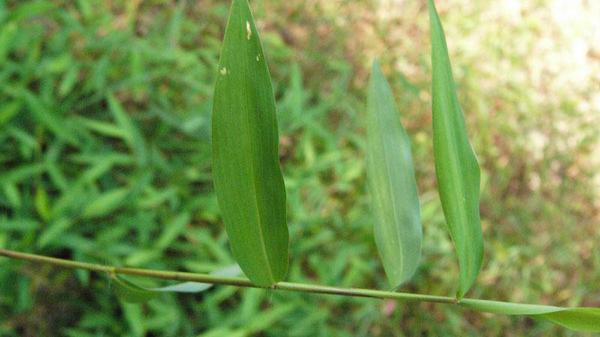Description
Japanese stiltgrass (Microstegium vimineum) is a summer annual grass that generally grows 1-3 feet in a branching, sprawling, mat-like manner. Its pale green leaves alternate along a branched stalk, and it resembles a small bamboo plant. Leaves are narrow and lightly hairy. One feature to notice is the pale stripe of hair along the midrib of the upper leaf surface. Japanese stiltgrass spreads rapidly, and out-competes native vegetation in areas of low light.
Cultural Control
Maintain a dense, actively growing turf through proper mowing, fertilizing, and watering practices. Mow at the proper height for your selected adapted turfgrass. Coring and traffic control reduce compaction and encourage desirable turfgrass competition. It is best to control this summer annual broadleaf weed in late spring or early summer because it is easier to control at this time and the turf will have a greater chance of recovering the areas previously occupied by weeds.
Species Data
- SEEDHEAD / FLOWER
- one or more spike-like raceme
- VERNATION TYPE
- rolled
- LIGULE TYPE
- membranous with hairs on the back
- GROWTH SEASON / LIFE CYCLE
- summer annual weed
- AURICLE TYPE
- absent
- LEAF BLADE TIP SHAPE
- sharp-pointed; leaves are asymmetrical (midvein does not divide the leaf into two equal parts)
Figure 1
- sharp-pointed; leaves are asymmetrical (midvein does not divide the leaf into two equal parts)
- LEAF BLADE WIDTH
- 0.12 - 0.4 inches (3 - 10 mm) wide
- STOLON PRESENCE
- absent
- RHIZOME PRESENCE
- absent
- SHEATH TYPE
- round
Publication date: Nov. 9, 2017
Recommendations for the use of agricultural chemicals are included in this publication as a convenience to the reader. The use of brand names and any mention or listing of commercial products or services in this publication does not imply endorsement by NC State University or N.C. A&T State University nor discrimination against similar products or services not mentioned. Individuals who use agricultural chemicals are responsible for ensuring that the intended use complies with current regulations and conforms to the product label. Be sure to obtain current information about usage regulations and examine a current product label before applying any chemical. For assistance, contact your local N.C. Cooperative Extension county center.
N.C. Cooperative Extension prohibits discrimination and harassment regardless of age, color, disability, family and marital status, gender identity, national origin, political beliefs, race, religion, sex (including pregnancy), sexual orientation and veteran status.

